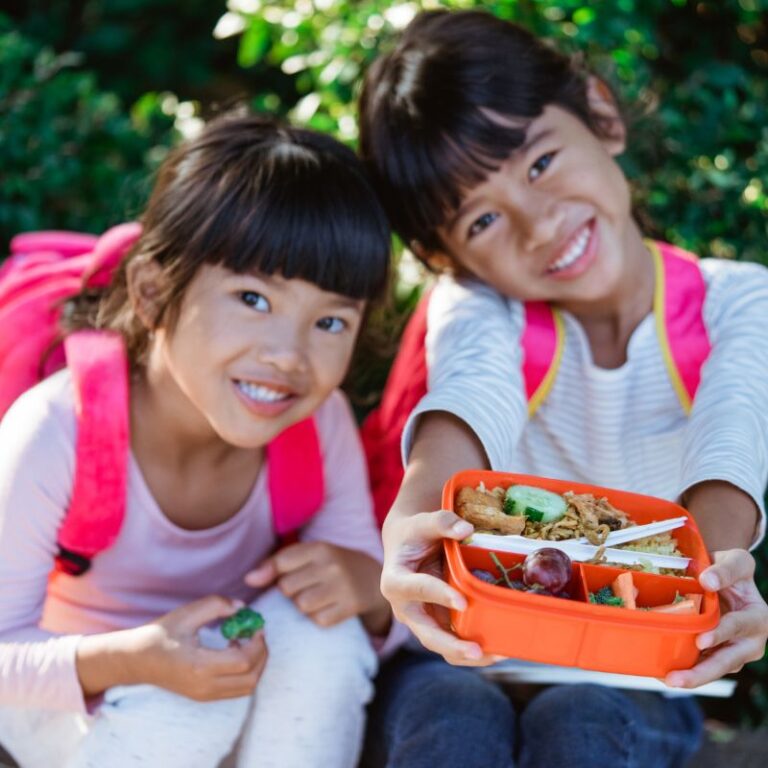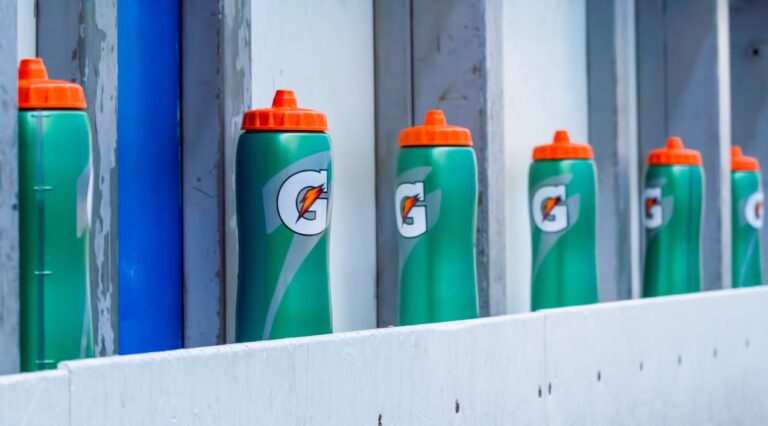It’s the most wonderful time of the year! … or is it?!
With the approach of the upcoming school year I often wonder if the excitement of having the kids back in school supersedes the displeasure of having to pack lunches again?!
For those of you with adventurous eaters, lunches aren’t likely to be a big deal. I have a good friend who told me that her daughter enjoys eating cold leftovers for lunch everyday – even cold rice! Impressive, eh? That makes the lunchbox routine a piece of cake.
However, for many of us who have children with selective eating habits (aka picky eating) it can sometimes feel like an uphill battle. (Note to self – packing lunch boxes with new foods that your picky eater has never seen or tried before isn’t the best idea. Save those for after-school snacks, supper or anytime on the weekend.)

Picky eating isn’t the only struggle for packing lunch boxes – are any of these familiar to you?
- No nut policies, which are in effect at most elementary public schools in Ontario
- Other food allergies or intolerances – there are many!
- The effect of ADHD medications on your child’s appetite (or lack thereof)
- Hot food that doesn’t stay hot enough
- Cold food that doesn’t stay cold enough (or gets too cold with ice packs … yes, I’ve heard it all!)
- Leaky containers resulting in a wet and sometimes stinky lunch box!
Mix this all together and you have a recipe the Lunch box Blues. It’s not an official DSM-5 diagnosis yet but I’m gonna coin the term now so I get the bragging rights when it is.
Joking aside, it’s not all dooms-day. I have assembled a list below of ideas to jump start your process this year – or at least spark a few new ideas. Before I get to the list, here are a few do’s and dont’s to remember when packing lunches:
1. Don’t get too “Pinterest-y”.
Pinterest is a great tool for inspiration but it can go a bit TOO far! No child NEEDS star-shaped sandwiches or heart-shaped cheese slices. Keep it simple, people. Your children will get used to what you send, so set the bar at a level that you can realistically maintain throughout the year.
2. Do buy containers of varying shapes and sizes.
Experiment with various containers and see what works best for your child. You may want to have a Bento-style box on hand for some meals, and other lunches might warrant a thermos and a few small single serving containers. Some lunch boxes suit round containers, while others are easier with square or rectangular shapes. Having a variety and options is helpful.
Buying a more expensive container doesn’t necessarily mean that it will work better. Few are truly leak proof so be aware of the container’s orientation in the lunch box to minimize leaks and spills.
3. Don’t get hung up on sending a “perfect” lunch but do provide many whole food options.
I am not against sending a treat in lunch boxes but the entire lunch shouldn’t exclusively contain sugary or salty snacks. With the balanced day in effect at most schools (at least here in Ontario) and a very limited time to eat, it is easy to default towards sending “snacky” foods instead whole foods that we more often think of at meals.
If you’re struggling to know where to start, here is my 3-2-2-1 rule of thumb.
The 3-2-2-1 rule of thumb:
- 3 servings of fruits/vegetables (at least 1 vegetable) – i.e. fresh or frozen; canned in no added salt or sugar
- 2 servings of protein-rich foods – i.e. meat, dairy, seeds, legumes, beans, seed butters (or nuts/nut butters if allowed)
- 2 servings of whole grains/starches – i.e. whole grain bread/buns/wraps/pitas/crackers/pasta, potatoes, homemade whole grain muffin
- 1 treat (optional)
Servings of foods will vary depending on your child’s age, appetite, activity level etc. Little tummies may need one less serving from each category listed above. Try starting with a “2-1-1-0” rule of thumb at first and progress from there.

50+ Lunchbox Inspirations
Whether it’s your first time packing lunches or your 20th year doing so, we all need a little bit of inspiration now and then! Here are a few ideas to help inspire your veggie, fruit, protein and whole grain offerings.
Veggie serving
- Grape or cherry tomatoes
- Cucumber (slices or sticks)
- Carrot sticks or grated carrots in a light OJ dressing
- Celery sticks
- Peppers (yellow, orange and red are sweetest)
- Sugar snap peas or frozen peas (a cold and sweet treat!)
- Broccoli or cauliflower plain or in a mixed salad
Serve veggies alone or with a protein-rich dip like hummus or tzatziki or a homemade Greek yogurt or a bean-based dip, like this one from Foodland Ontario.
Fruit serving
- Small apple or apple slices coated in cinnamon (place apple slices in a bag, add cinnamon and shake! This helps to prevent browning and makes it sweet and easy to eat for little hands!)
- No-added sugar applesauce
- Small pear, peach, nectarine or apricot
- Watermelon or cantaloupe cubes
- Grapes
- Berries (fresh or frozen)
- Kiwi
- Dragon fruit
- Mango (fresh or frozen)
- Orange slices (cut length-wise or in rounds
- Dried fruits with no added sugar like prunes, apricots, figs etc.
You get the picture – any fresh or frozen fruit will do! If buying canned, look for fruit canned with no added sugar or light syrup, which you can drain and rinse under water.
Mains – usually a protein serving + a whole grain serving
- Whole grain wraps, pitas, or sandwiches (on bread or buns)
- Meat options: tuna (avoid white albacore tuna, stick to skipjack or light tuna), salmon or chicken salad
- Vegan options: chickpea salad, tahini & raspberry chia jam (PB & J alternate!)
- Toppings: lettuce, pea sprouts, alfalfa sprouts, thinly sliced veggies, pickles
- 1 or 2 hard boiled eggs + whole grain crackers (look for first ingredient to be a whole grain)
- Cheese (slices, rounds, or strings) + whole grain crackers
- Egg/fritatta cups + mini whole grain roll (make egg cups in advance and refrigerate/freeze)
- Leftover roasted sweet potato + marinated tofu cubes
- High protein pancakes with chia berry jam for dipping (leftover breakfast OR make in advance and refrigerate or freeze) or substitute with leftover French toast
- Plain whole grain noodles (leftover from supper) + tomato sauce or salsa for dipping with shredded cheddar cheese
- Cold mixed salads – i.e. Greek lentil salad or chicken pasta salad
- Leftover homemade pizza or whole grain pita or English muffin pizzas (make in advance and freeze)
- Quesadillas – leftover from supper served cold or reheated and wrapped in tin foil
- Yogurt parfait (Greek yogurt + fruit + oat/seed/dried fruit granola)
- Leftover chicken Caesar salad put into a wrap (send croutons separately as they get soggy!)
- Thermos foods (don’t forget to prime your thermos with hot or cold water before packing)
- Soups, stews and chilli
- Oatmeal with mix-ins (hemp hearts, pumpkin seeds, chia seeds, raisins)
- Rice bowls like this one or your own version
- Cold balanced smoothie with Greek yogurt, fruit, milk, spinach and flax
Snack – whole grain (or fruit or veg) + a protein serving
- Homemade muffins made with all whole grain flours (wheat, spelt, rye, oat etc.)
- i.e. blueberry banana, raspberry chia, pumpkin carrot, zucchini/carrot, spinach cheddar
- These muffins are easy, made with bananas and Greek yogurt in the blender
- Energy Bites – made with sunflower seed butter like this one or this one
- Cookies – use whole grain flours and boost protein with blended beans or seed butters (try this one with pumpkin seed butter)
- Granola bars – homemade versions or store-bought with at least 4 grams fibre per serving and less than 8 grams sugar (ideally less than 6 grams but those are hard to find)
- Homemade trail mix – sunflower seeds, pumpkin seeds, roasted chickpeas, dried fruit, dry cereal
- Hummus (guac or zatziki) + veggies + crackers (or whole grain pitas)
- Greek yogurt cup + berries
- Chocolate chia pudding made with protein-rich milk like cow’s milk or soy milk
Treats – every once in a while!
- Veggie straws or chips – sorry, these don’t count as vegetables 🙂
- Real-fruit gummies – these also do not count as a fruit serving, “real-fruit” or not!
- Store-bought cookies – my favourite to send are the spelt flour organic ginger snaps
- Small piece of good quality chocolate
- Homemade brownies (I love this recipe)
What are your brilliant ideas? Share below and let’s all smash the lunch box routine this year!
Take it one bite at a time,
Rosanne
If you enjoyed this article, I recommend you check out this article; Are my children hungry or bored? before you leave. It might make all the difference to what you are struggling with or the information you are looking for.






